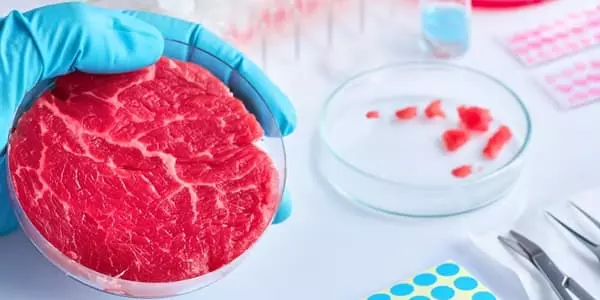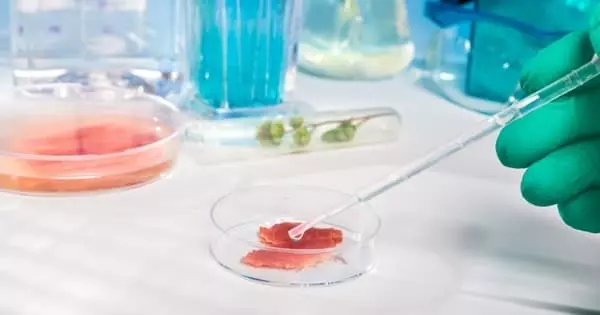Since the turn of the century, stem cell technology has delivered on its promise to transform the healthcare industry, while applications in a variety of fields have emerged. Bioreactors, which provide improved process control and scalability, have been widely used in stem cell production and cultivation around the world. Stem cells are undifferentiated cells with the ability to self-renew or divide and develop into different types of cells. Since its discovery in the 1960s, stem cell technology has used the power of stem cells to solve medical problems.
Scientists have obtained stem cells from livestock that grow under chemically defined conditions for the first time, paving the way for the production of cell-cultured meat and the breeding of enhanced livestock.
Researchers from the University of Nottingham’s School of Biosciences collaborated with colleagues from Cambridge, Exeter Tokyo, and Meiji (Japan) universities to create stem cell lines from pig, sheep, and cattle embryos are grown without serum, feeder cells, or antibiotics. The study, “Pluripotent stem cells related to embryonic disc exhibit common self-renewal requirements in diverse livestock species,” was funded by the BBSRC, EU (ERC), MRC, and Wellcome Trust and was published today in the journal Development.
The ability to generate and sustain livestock stem cells under chemically defined conditions opens the door to the development of novel food products such as cultured meat. The cell lines we created are a significant improvement over previous models because they have the unique ability to grow indefinitely to produce muscle and fat.
Professor Ramiro Alberio
Chemically defined conditions are growth media suitable for in vitro cell culture of animal cells, with all chemical components known. Standard cell culture media are typically made up of a basal medium supplemented with animal serum (such as fetal bovine serum, FBS) as a source of nutrients and other unspecified factors.
Because serum has technical disadvantages such as its undefined nature, batch-to-batch variability in composition, and the risk of contamination, this new chemically defined approach provides greater consistency and safety, making it an ideal solution for manufacturing new lab-grown food products.
Professor Ramiro Alberio, who led the study, explains: “The ability to generate and sustain livestock stem cells under chemically defined conditions opens the door to the development of novel food products such as cultured meat. The cell lines we created are a significant improvement over previous models because they have the unique ability to grow indefinitely to produce muscle and fat.”

These novel cell lines have the ability to differentiate into multiple cell types, can be genetically manipulated with the Crispr/Cas9 gene-editing tool, and can be used as donors for nuclear transfer. This technology opens up new avenues for research into gene editing animals to increase productivity, as well as adaptation to climate change and dietary changes to reduce the environmental impact of livestock production.
Professor Alberio continues: “Gene editing in this manner causes changes that would occur naturally over time, but in a selective and rapid manner to customize specific traits. This has the potential to accelerate the pace of genetic selection in livestock and cultured meat in order to improve productivity and the development of healthier foods. Finding reliable and sustainable food is critical with a growing population to feed and a changing climate. This study suggests potential solutions that the food industry could implement on a large scale.”
“It is very exciting that starting from a fundamental question about early development in different animals, we have discovered a technique that may revolutionize future meat production,” said Professor Austin Smith, Director of the University of Exeter’s Living Systems Institute and one of the world’s leading experts in stem cell research.
Stem cells are the basic anchor cells from which all cells in the body develop in humans. They differ in their ability to differentiate into specialized cell types, which is known as potency. Based on their potency, stem cells are classified into three types.
A fertilized egg is made up of totipotent stem cells, which have the ability to be programmed into any cell type, including embryonic and placental cells. The second type of cell is the pluripotent cell, which has more limitations in its ability to divide than totipotent cells. These cells can form more than 200 different cell types in the adult body and can also be found in the embryo.
Finally, multipotent stem cells are already committed to the formation of specific cell lineages. These cells can be found in a variety of tissues throughout the body, including adult bone marrow, skin, and cord blood.





